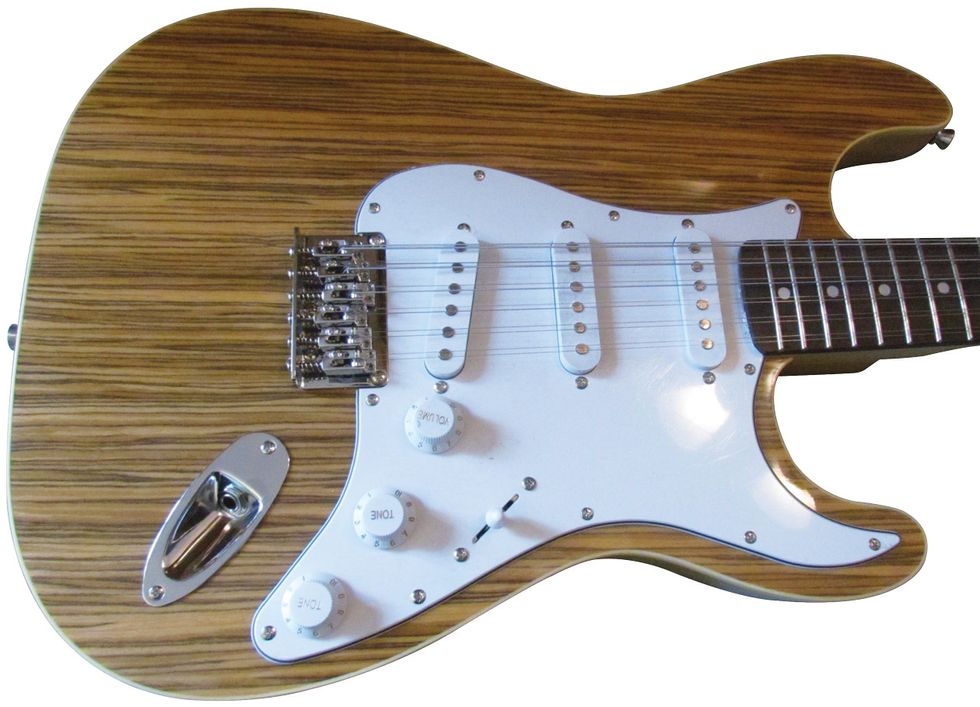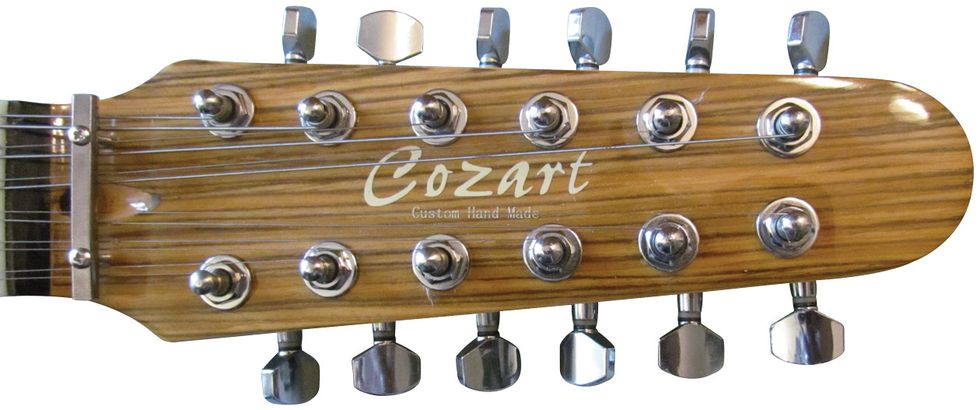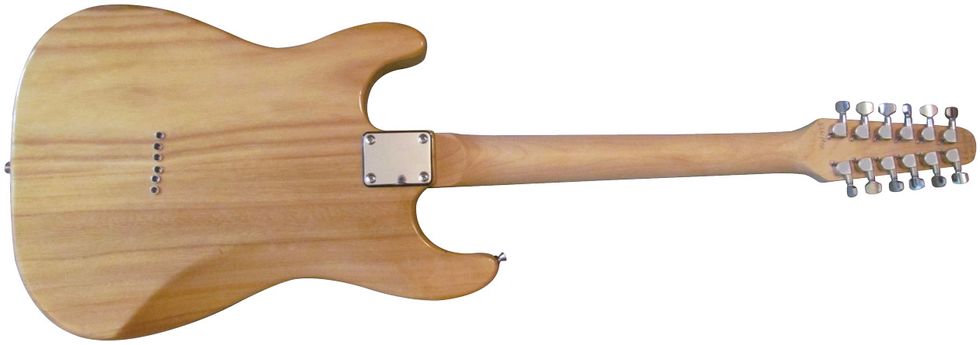I’ve wanted a Strat 12-string since the mid ’90s, when I played a friend’s and was wowed by the cool sounds. Fast-forward to a month ago, and I spotted this beauty on eBay. It’s made by a company I’d never heard of, called Cozart. So I did a little research and found all kinds of cool guitars made by them. This one caught my eye because its top is made of some highly grained and perhaps exotic wood. They were selling new for $130 to $150. But I’m a bottom feeder, so I waited until I could snag one at a cheaper price. Got it for $114 including shipping, I did.
When it arrived, it was so lightweight that I had to immediately pull out a scale and weigh it: 5 pounds and 14 ounces, folks. Wowzer! That includes the weight of 12 tuners. This is by far the lightest electric 12-string I’ve ever played. Lighter-bodied electrics have more resonance, to my ears—allowing more tone to slip through.
The next step was to set it up. I’ve had 12-strings before, so I knew the drill. First, I tuned it up to pitch to assess things. I straightened out the neck, lowered the action, and tweaked the intonation. Then I used a nut file to lower the action at the nut, which is no small job on a 12-string.
It’s fair to say that with its body-mount jack, 5-position switch, 3-dial control set, and pickup array, Cozart wasn’t trying to reinvent the wheel with this guitar.
Bottom Feeder Observation #288: Tuning a 12-string doesn’t take twice as long as a 6-string. It takes four or five times longer. But one cool thing about S-style 12-strings is that you have a 5-way switch for lots of variations of sounds. That said, there are really only two positions I generally go to in most situations: middle and bridge. But listen to my MP3 and you’ll hear all five positions.
Even with a dozen tuners, this instrument weighs in at a spritely 5 pounds and 14 ounces—perfect for our
columnist’s tonal preferences.
After a couple of hours, I had it set up to my liking and I ended up playing it for fun while continuing to tweak it. A few days later, it seemed harder to play, so I continued straightening the neck and lowering the action until it felt good. After that it seemed to stabilize and stay in tune.
With a 4-bolt bolt-on neck and through-body stringing, the S-style foundation rules all aspects of this guitar. But the body wood’s grain has undeniable charms.
Bottom Feeder Tip #466: Whenever you get a new guitar, you’ll usually need anywhere from a few days to a few weeks for the instrument to get used to its new environment. If you do a setup too soon, you’ll probably need to do it again in a few weeks. That’s why I always advocate for learning how to do a setup yourself, so you can tweak as you go.
So how do I like it now? I’m still digging it. I was so impressed with it that I’ve begun collecting other Cozarts here and there. And most of their guitars seem to be very light bodied—a plus in my book.











![Rig Rundown: Russian Circles’ Mike Sullivan [2025]](https://www.premierguitar.com/media-library/youtube.jpg?id=62303631&width=1245&height=700&quality=70&coordinates=0%2C0%2C0%2C0)

















